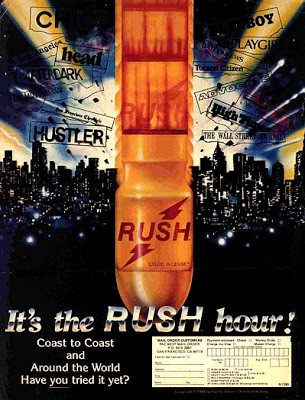Posted by Madam Bubby
I was born into a world where baby boys were routinely circumcised, whether they were Jewish or not. Hygienic purposes. (These were also the days when nurses wore caps, which were later deemed to be unhygienic. Go figure.)
These were also the days when women at least in middle class white America were knocked out in order to give birth. Babies were kept in rooms behind windows, often in incubators even if they weren’t under five pounds, held up for viewing like specimens by nurses in crisp white caps. (I am remembering the episode of the birth of Little Ricky on I Love Lucy, which corresponded to Lucille Ball scheduling a caesarian section for the birth of her son, Desi Arnaz, Jr.)

Ricky in the hospital waiting room (Source)
It's like anything that resembled the nitty gritty raw materials of sex and blood and birth and death was hidden, sterilized as much as possible. Dirt was disorder. Sex was dirty unless it produced babies, but giving birth to those babies was a disordered process that required forceps and scalpels and anesthesia to control it, get it out of the realm of actual living.

And of course any type of sex other than what took place behind closed doors in a missionary position for procreative purposes was generally deemed dirty and disordered. Thus LGBTQ persons themselves were deemed by the general population as irredeemably dirty, unless they could cleanse themselves and rejoin the pristine world of Father Knows Best, itself but an idealized fantasy.
Mary Douglas in her seminal book Purity and Danger explored this primal desire to contain dirt and disorder, like the way we still keep our basic bodily functions of urination and defecation in a toilet which is supposed to be sparkling clean and in a room that is also supposed to be sparkling clean. The toilet itself is an image that contains in itself this fraught tension which informs our attitudes toward sexuality and even to parts of the body that one uses to express that sexuality.

Purity and Danger cover

Thus, that foreskin had to be brutally cut off, to cleanse, make pure, the member of an appendage would make its appearance and its role sexual act even more exciting, promising deep, dark, rich scents and that pungent but also enticing smegma.
It revealed the mystery in order to contain it. When I experienced sexually a man who was uncut for the first time (in the bathroom, and in the shower, ironically), which could imply he was somehow more complete, even “holy” which word can also mean complete, I experienced mystery. And in that mystery, glory, and by glory, I am thinking of not a vague disembodied entity or feeling in the clouds, but physical reality itself charged with an energy that creates and propels the orgasm but also encompasses it.

Images from The U.N.C.U.T. Club of L.A. (top) and Club Mandom 1: Blue Collar Cheese Factory (bottom)
His phallus contained on it a boundary, and it’s through crossing boundaries one grows, changes, lives, dies. I could experience at that time a fullness and as I said above, a mystery that transcended the rigid binaries which result from treating sexual, in fact, all human experience as something we have to dissect with scalpels and pull apart with forceps.
I’m not advocating for an end to circumcision, as it is a boundary-crossing, consensual ritual of initiation for males in many cultures, but, significantly, also a source of horrific pain and suffering for so many, especially women and girls who are circumcised in order to completely suppress their sexual desire, eliminate it like it is indeed something dirty and thus disordered. They in essence are forced into becoming objects only defined by what the culture deems as purity, but at the same time depriving them of living as full, complete persons.
Yes, there’s dangerous realities we do need to contain, as a virus plagues the world and we must first try and control it, then eradicate it, by amplifying up to the nth degree our bathroom rituals of cleansing and purifying. But our complicated, messy, exciting and ultimately glorious sexuality can and should become for humans both dangerous and pure, exploding the tension in that binary if only for a moment. A holy moment.












 Join our Email List
Join our Email List Like Us on Facebook
Like Us on Facebook Instagram
Instagram Youtube
Youtube Follow Us on Twitter
Follow Us on Twitter Follow us on Pinterest
Follow us on Pinterest